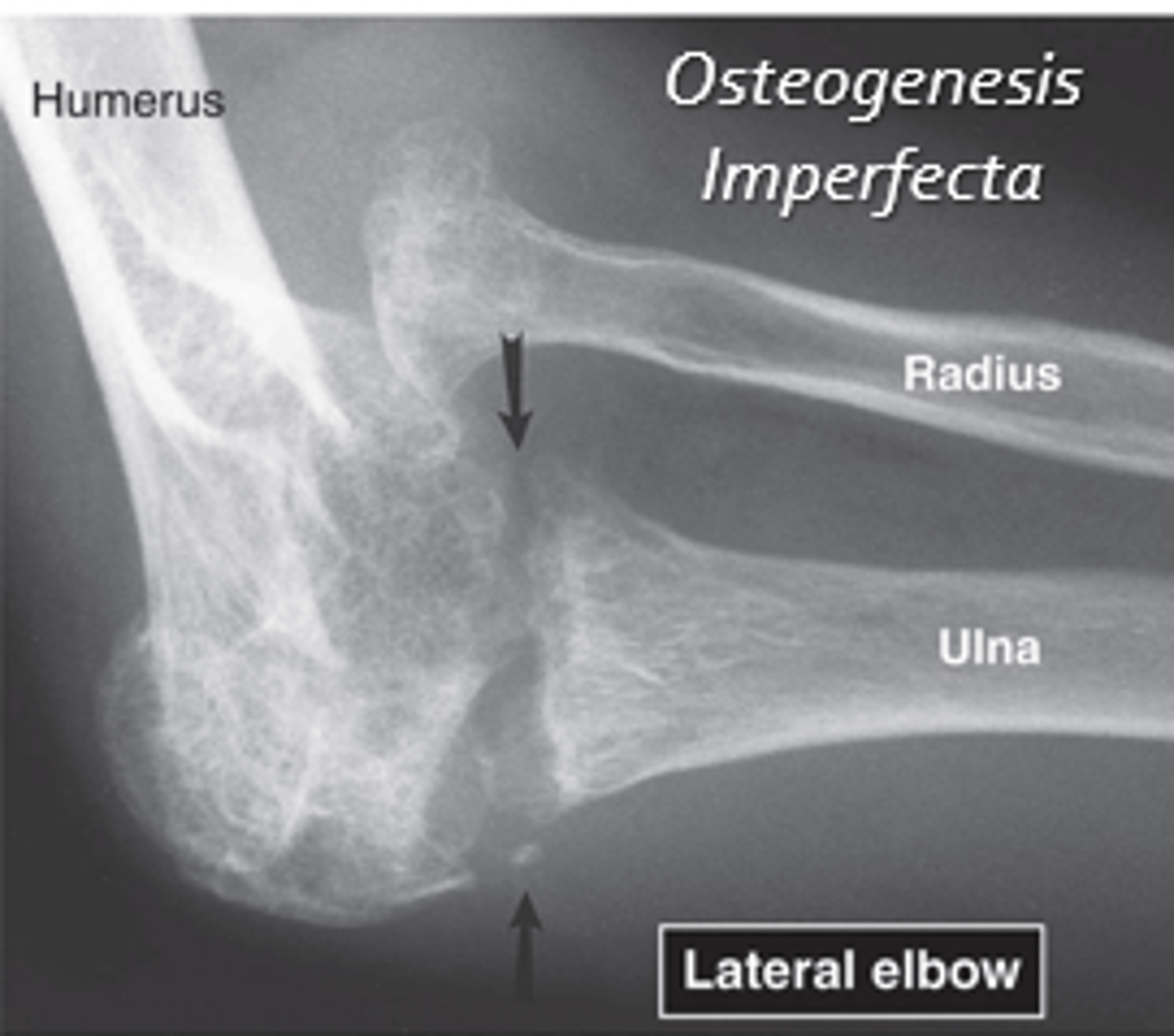Week 1f: Radiologic Evaluation of Fracture (Definitions)
1/27
There's no tags or description
Looks like no tags are added yet.
Name | Mastery | Learn | Test | Matching | Spaced |
|---|
No study sessions yet.
28 Terms
What is the most common disorder of the MSK system?
Trauma
What is the job of a Radiologist in Fractures?
- Diagnose the physical characteristics of the fracture or dislocation
- To assess and monitor the results of treatment
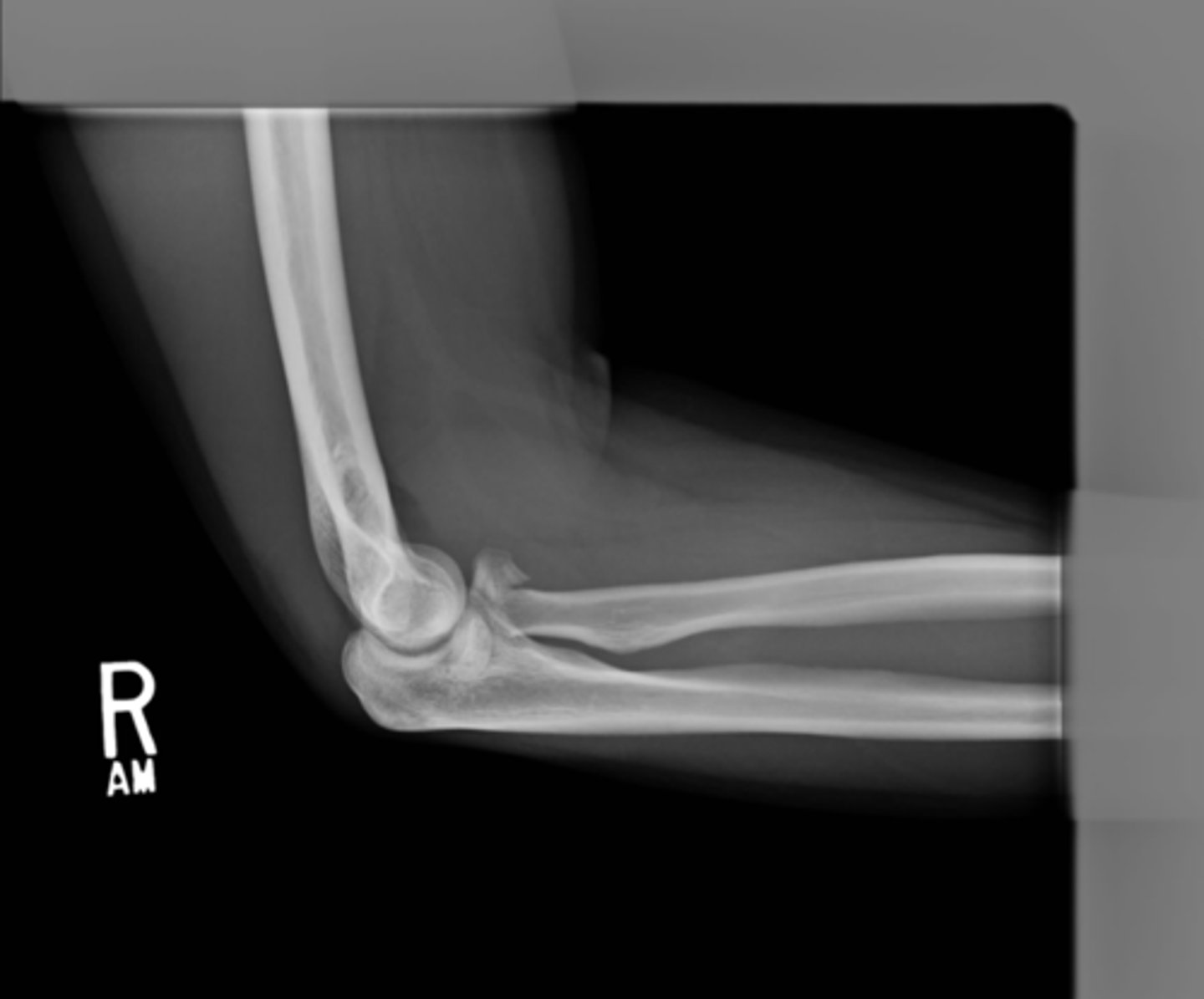
What is the definition of a fracture?
- A break in the continuity of bone or cartilage
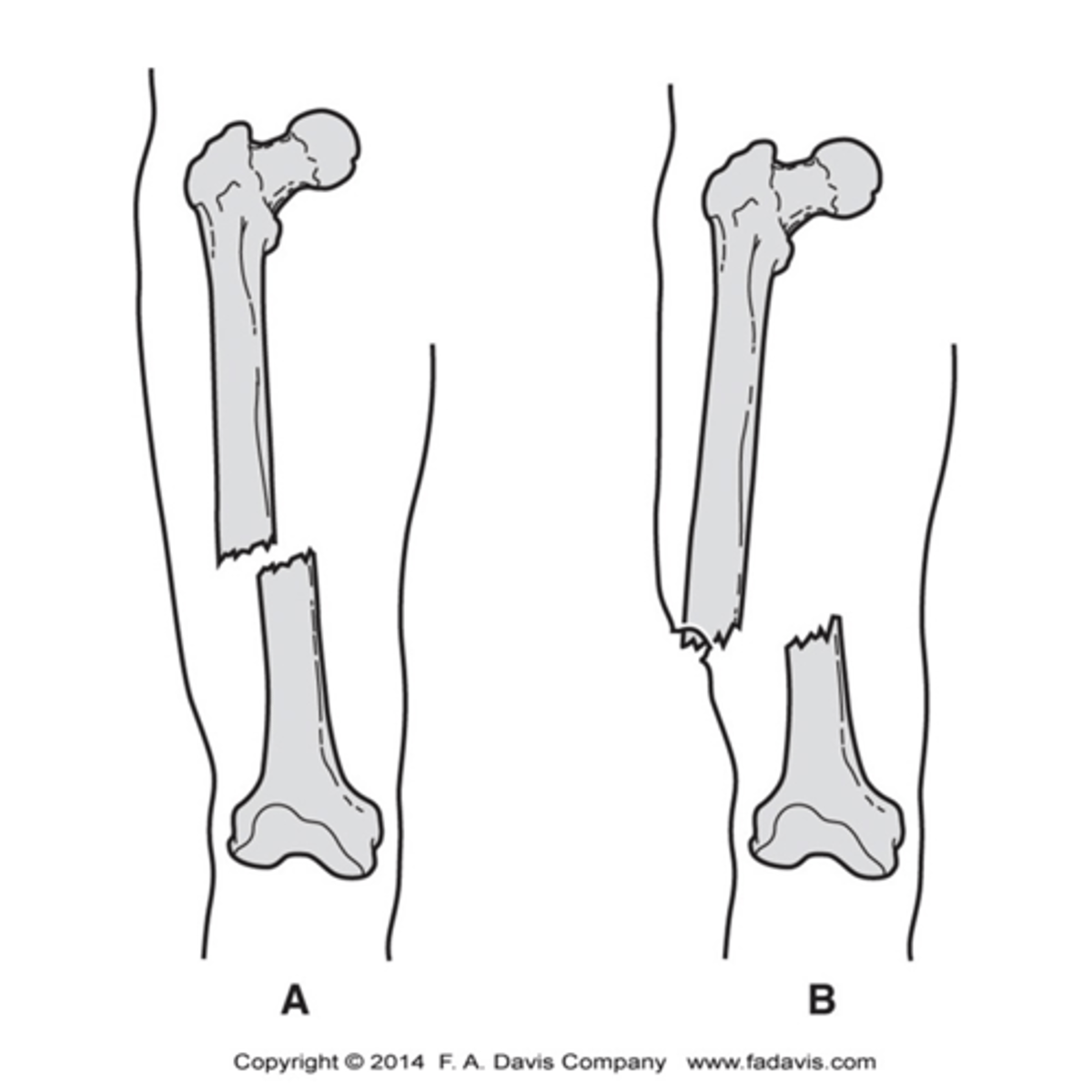
What is the difference between a closed and open fracture?
Closed Fracture:
- one in which the skin and soft tissues overlying the fracture are intact
Open Fracture:
- one in which there is communication with the external environment through a tear or perforation in the skin, no matter the size
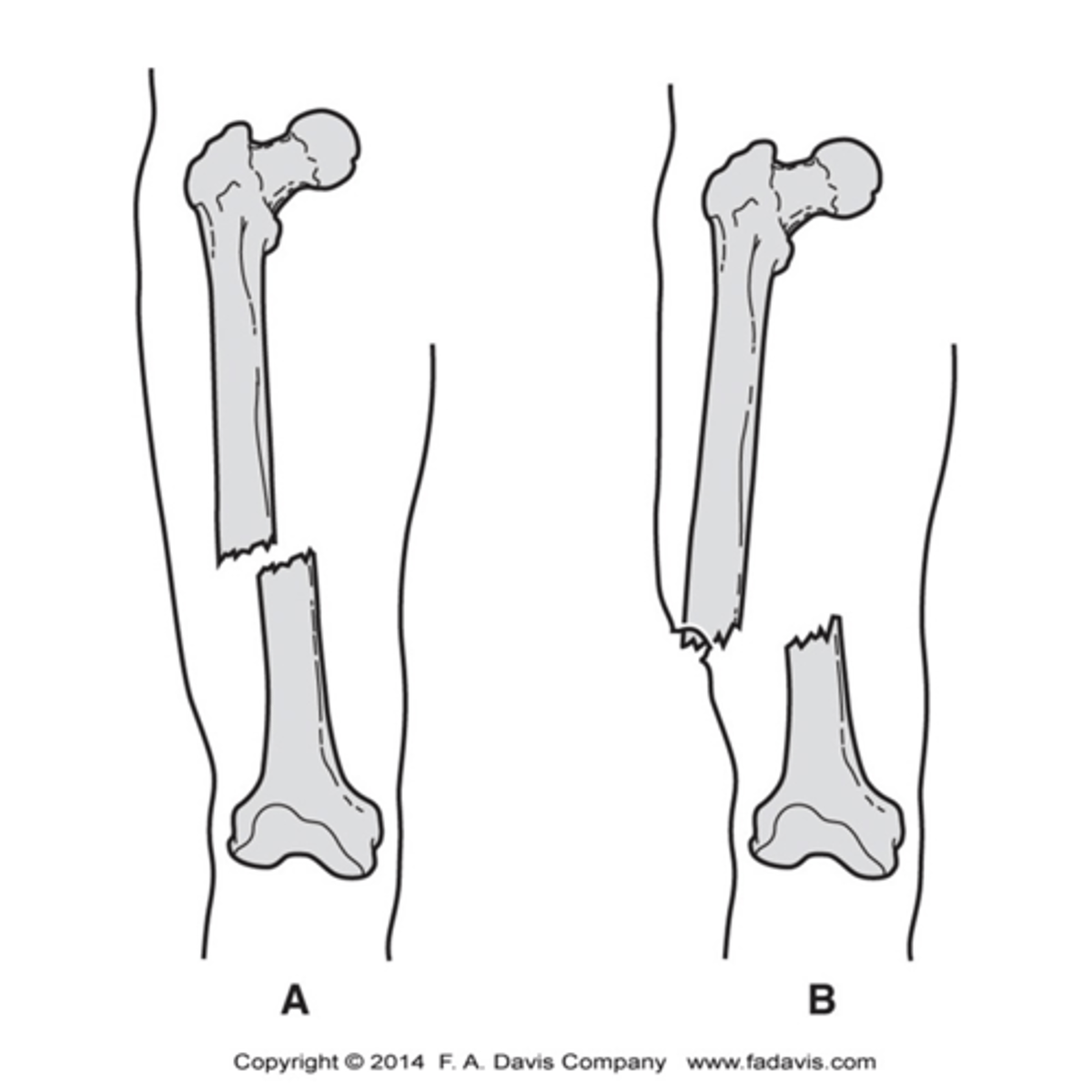
What is Greenspan's Seven Elements that might be included in a complete radiologic description of fracture?
1. Anatomical site and extent of fracture
2. Type of fracture
3. Alignment of fracture fragments
4. Direction of the fracture line
5. Special features of the fracture (avulsion, compression)
6. Associated abnormalities (Joint dislocation)
7. Fractures due to abnormal stress or pathological fracture
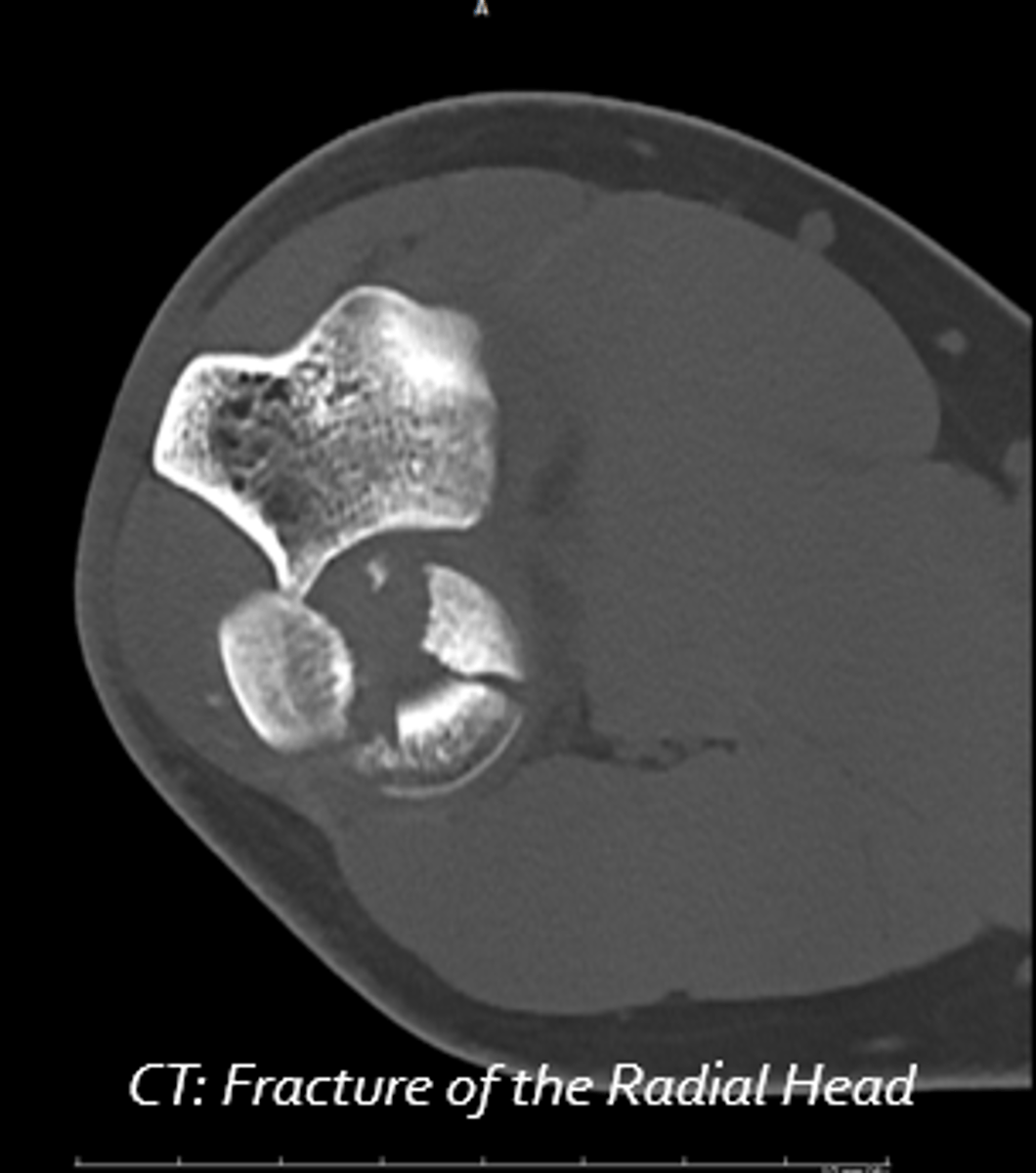
What are the reference points in Long bone? (1. Anatomical Site and Extent of Fracture)
- Shafts of Long Bones are divided into thirds or at the junction of these regions
- Ends of Long Bones are designated as Proximal or Distal
- Each end is described as intra-articular or extra-articular
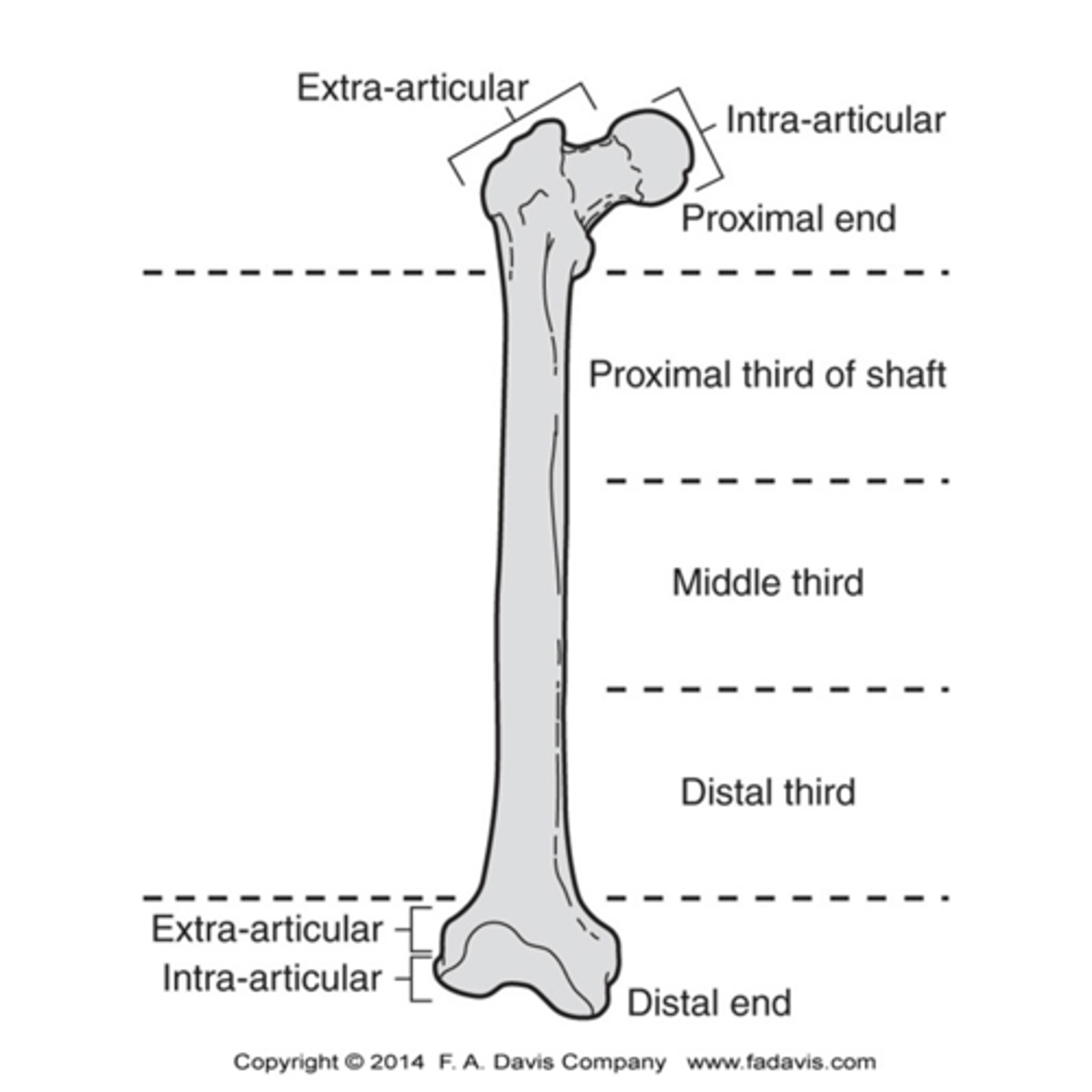
What are the reference points in flat or irregular shape bones? (1. Anatomical Site and Extent of Fracture
Intra-articular or extra-articular portions
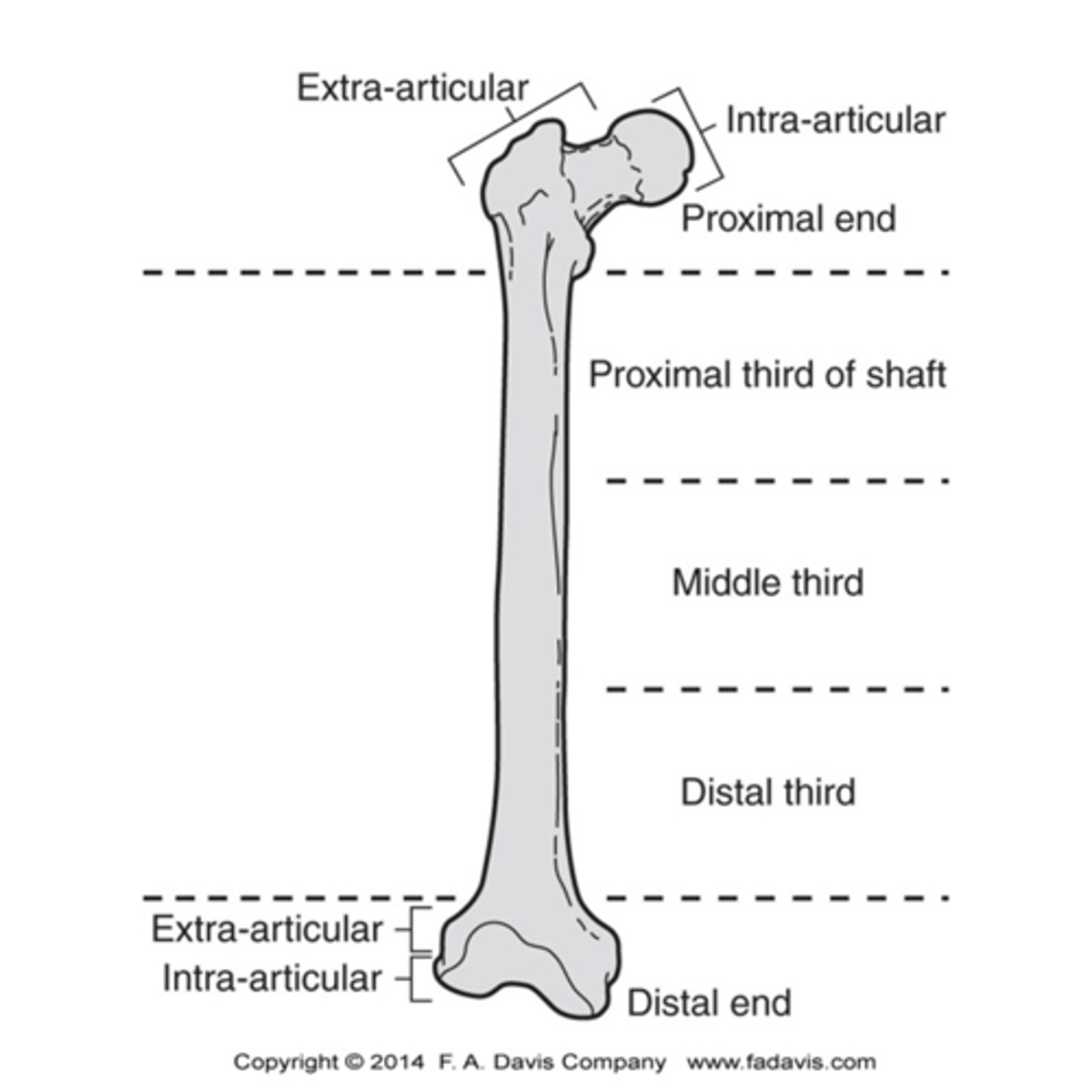
Examples of anatomical landmarks (1. Anatomical Site and Extent of Fracture)
- Intertrochanteric region of the femur
- Supracondylar of the distal femur
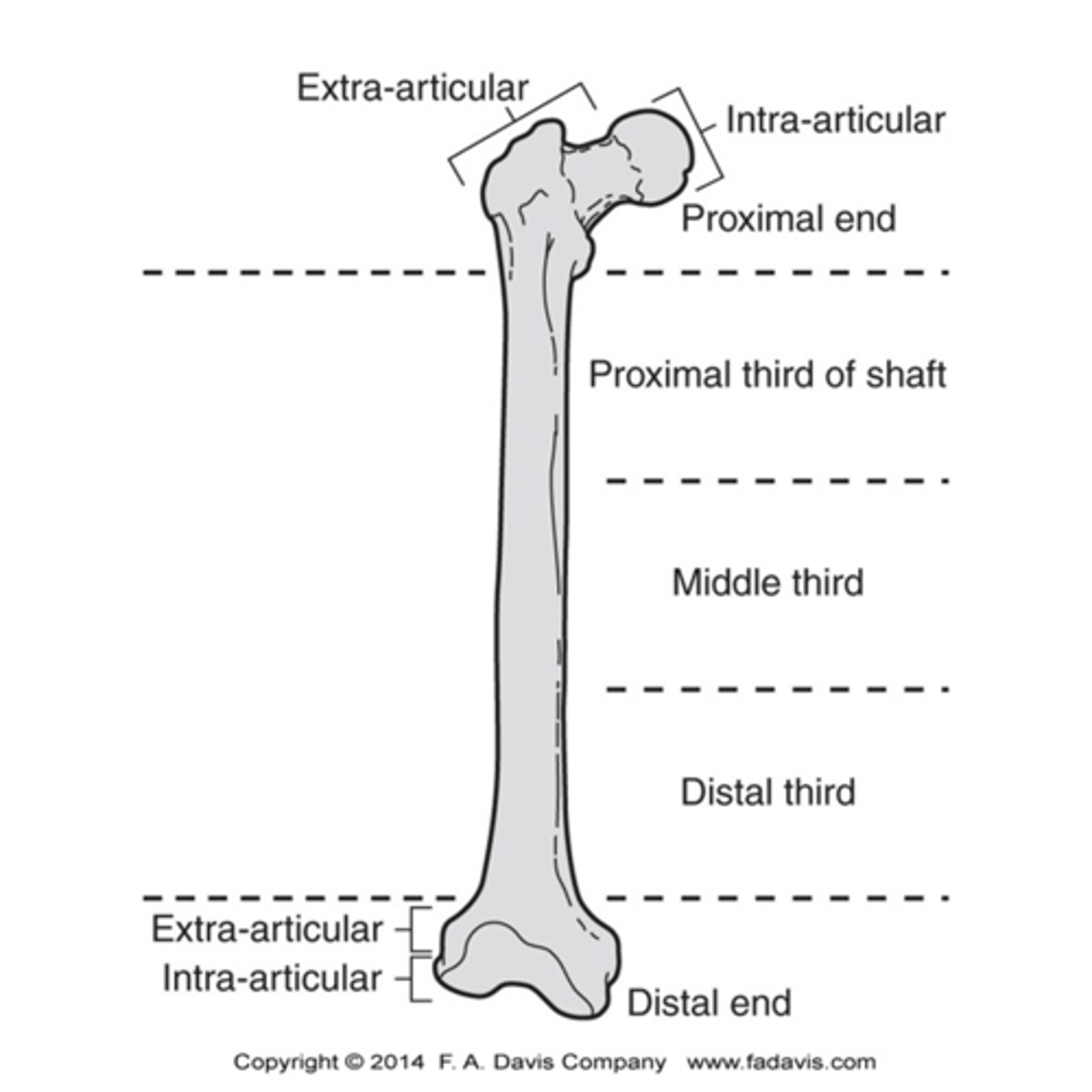
What is the difference between complete and incomplete fracture? (2. Type of Fracture)
Complete
- All cortices of the bone has been disrupted
- Now there are two separate fragments
- More than two fragments = "Comminuted"
Incomplete:
- Only one portion of the cortex is disrupted
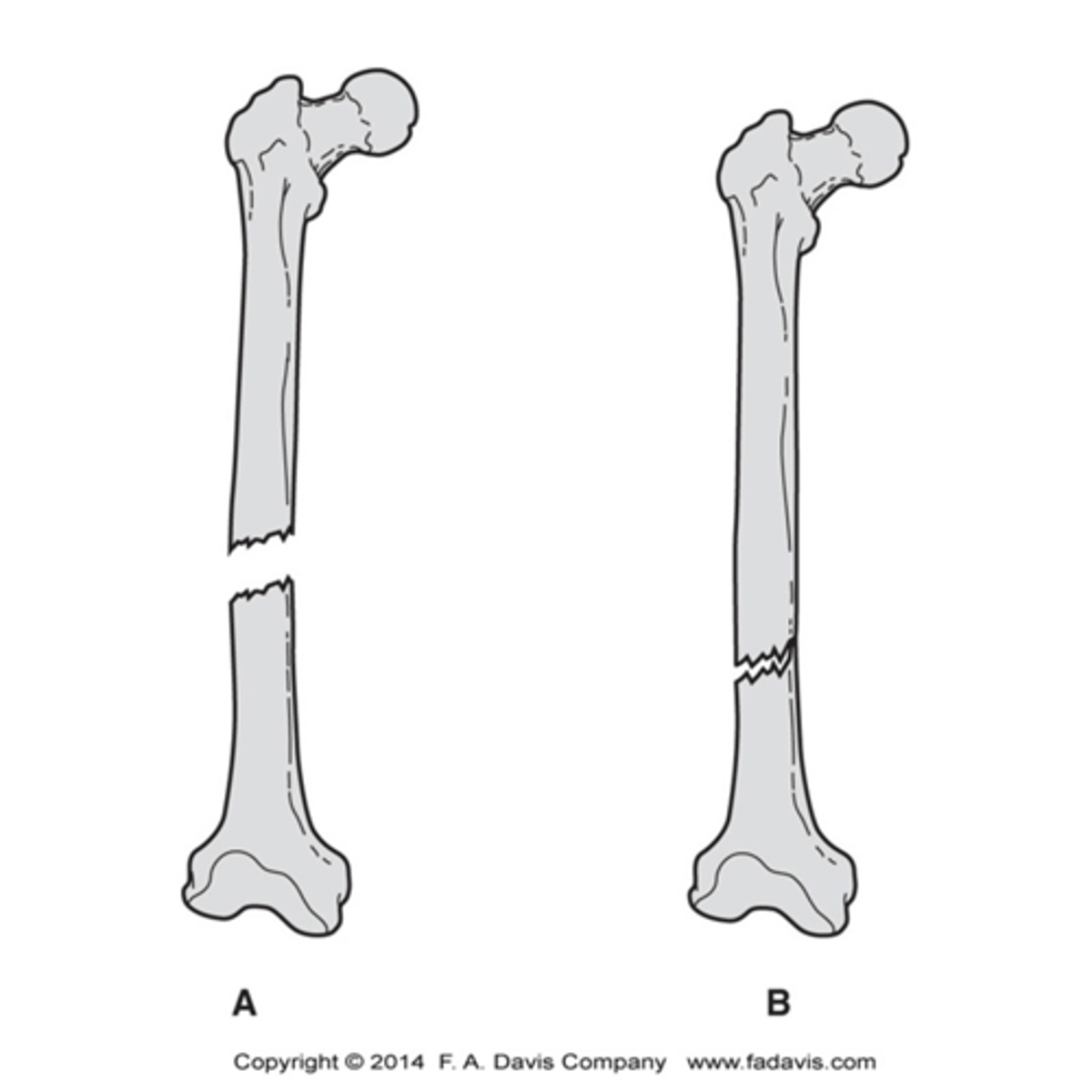
What is the common practice when describing the alignment of the fracture fragments? (3. Alignment of Fracture Fragments)
Common practice is to describe the relationship of the distal fragment relative to the proximal fragment
Loss of position = displacement
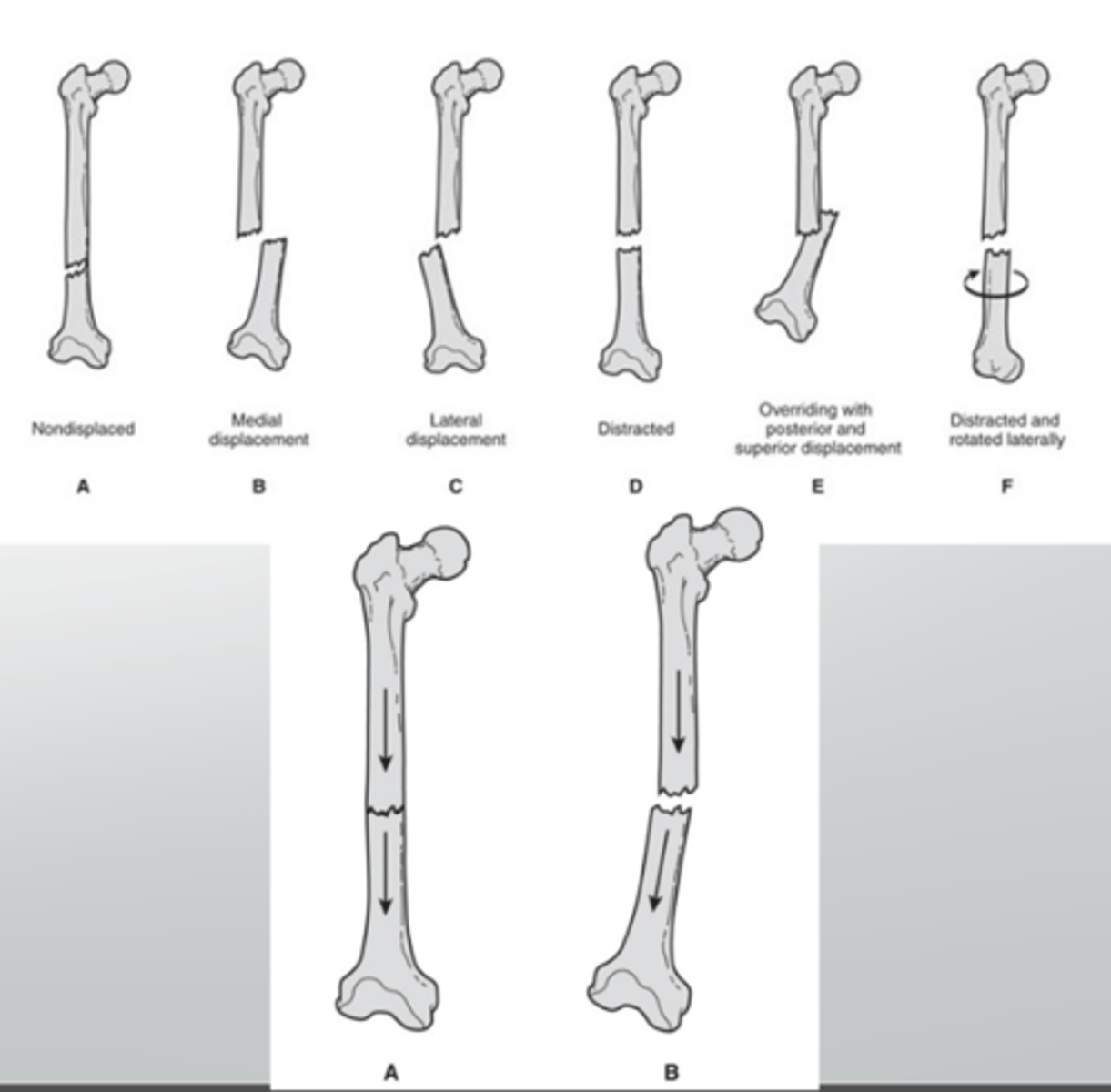
What are ways to describe amount of displacement? (3. Alignment of Fracture Fragments)
One cortex width, 1/2 shaft width, full shaft width
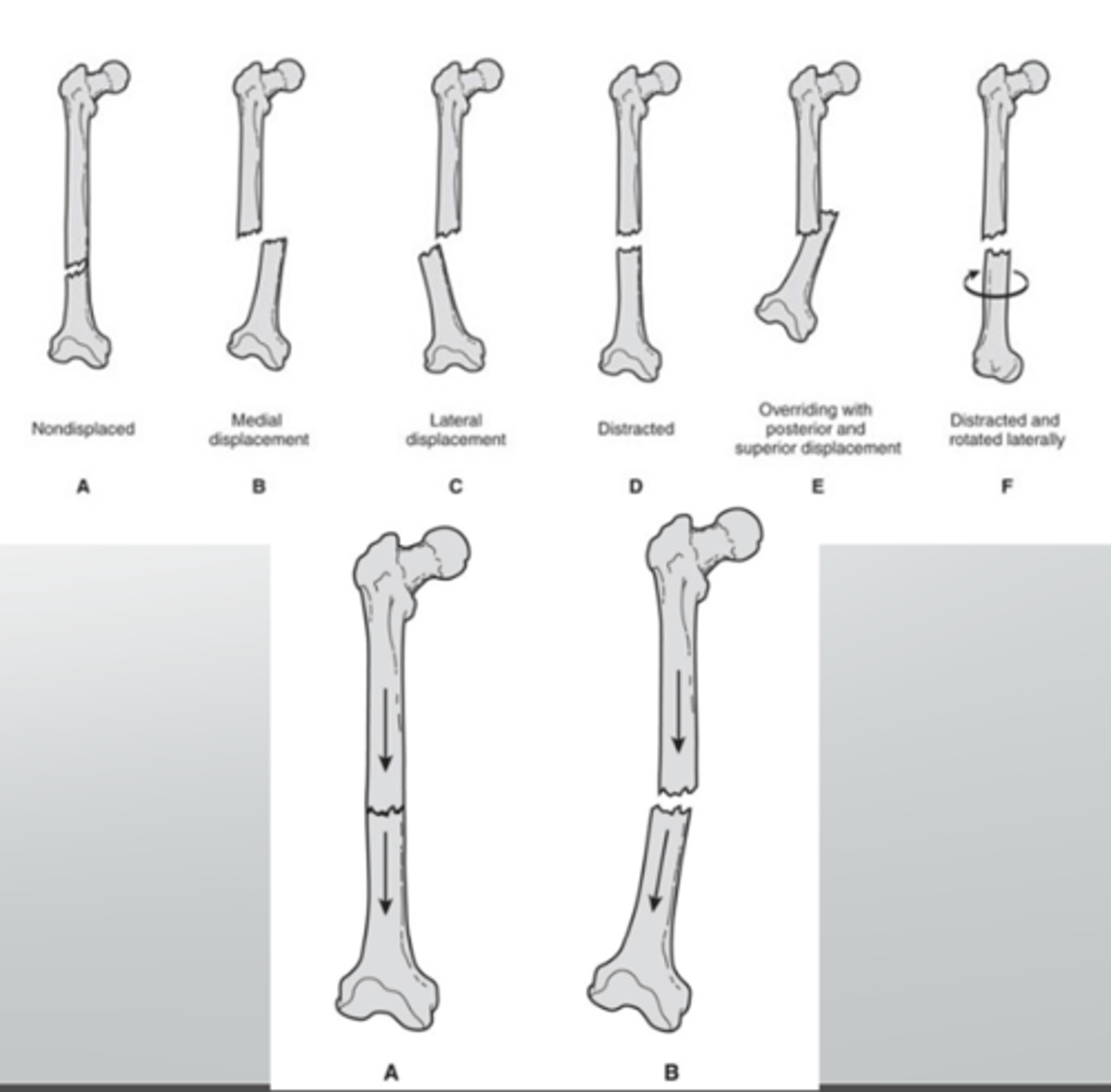
What are the 3 different positions of displacement? (3. Alignment of Fracture Fragments)
Distraction, Overriding, Rotation
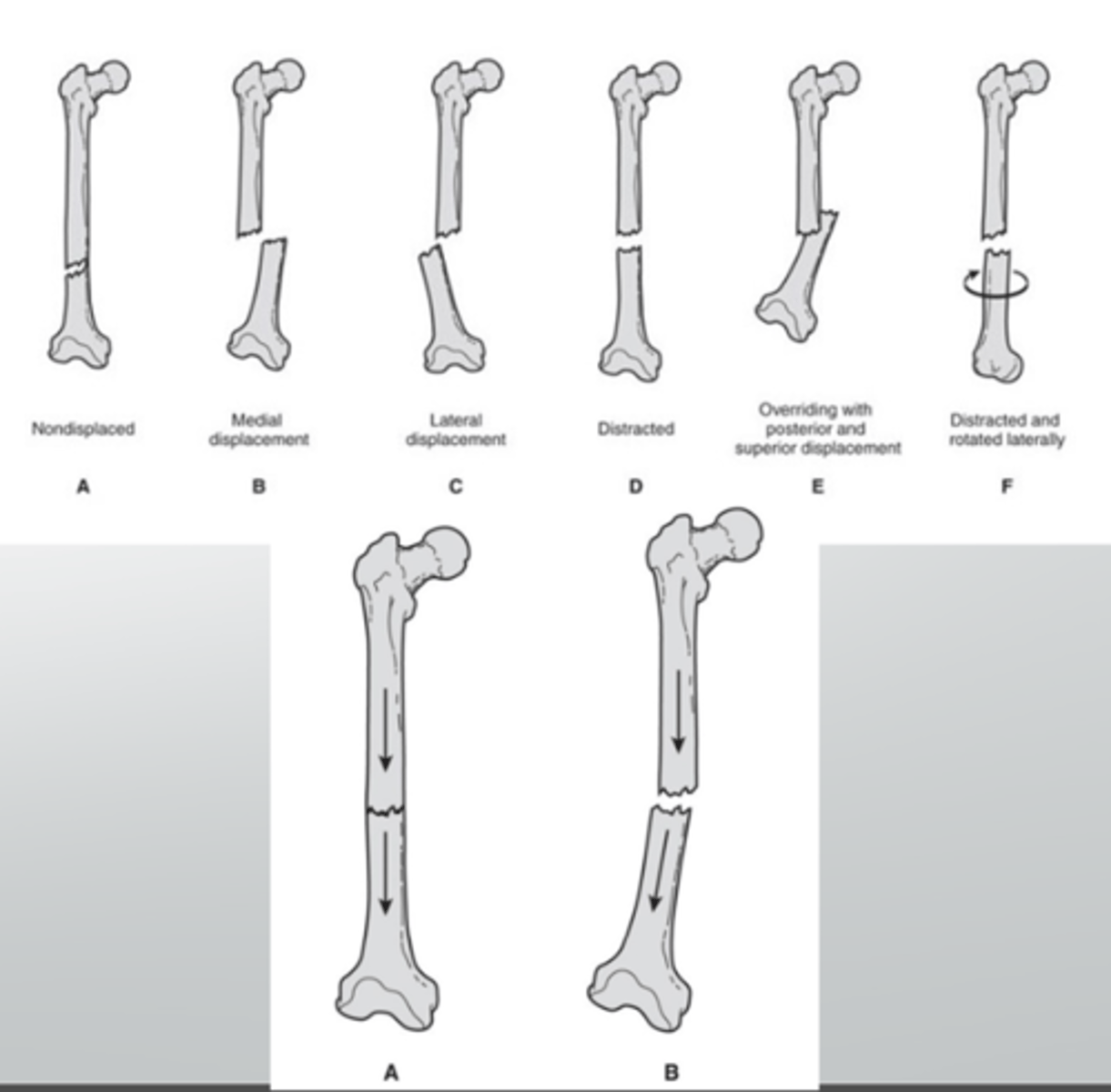
Longitudinal Relationship = ?? (3. Alignment of Fracture Fragments)
Alignment

What is Angulation? (3. Alignment of Fracture Fragments)
- Direction of the angular displacement
- Direction of the apex formed by the angulation
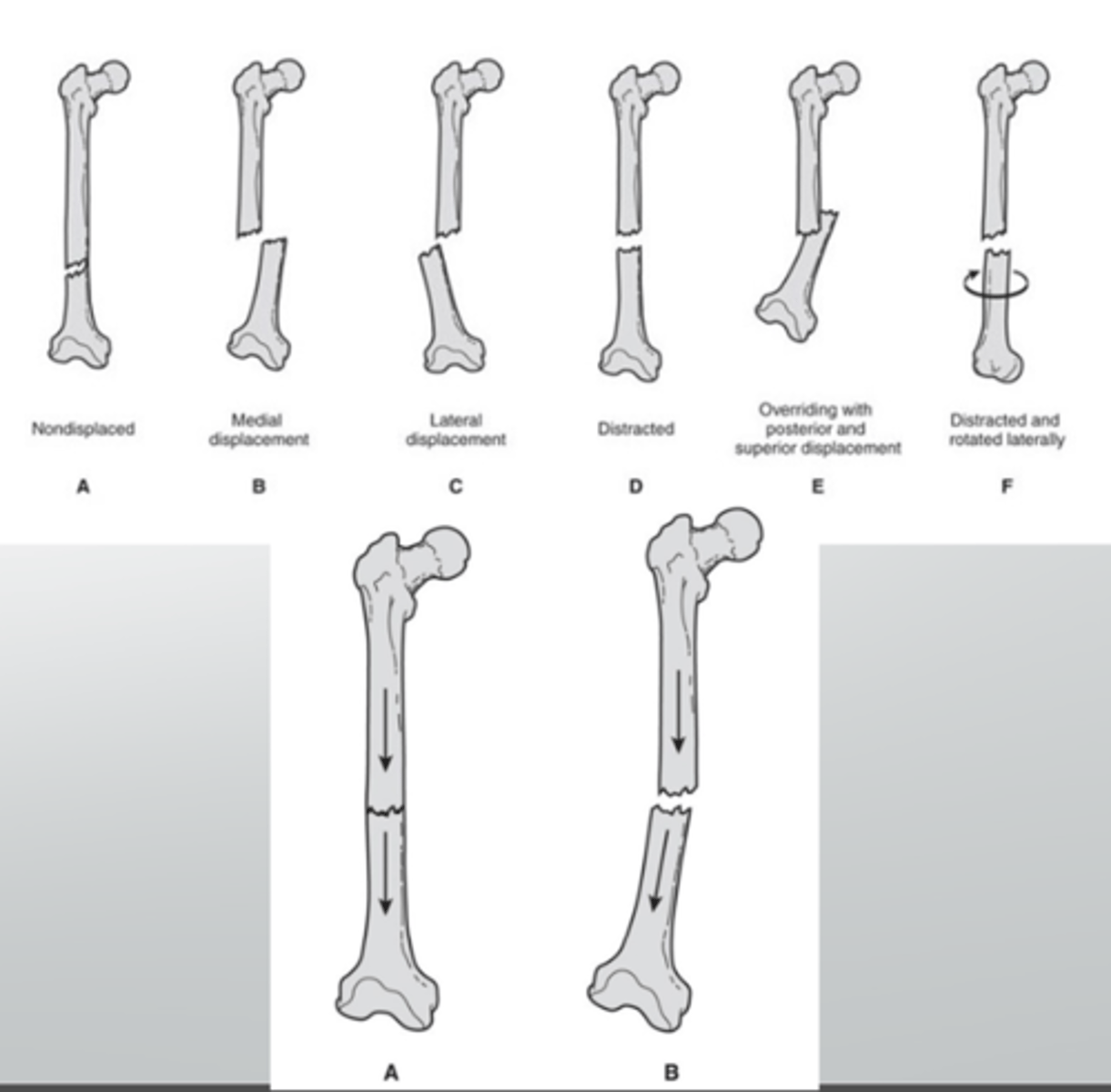
The Direction of the fracture line is in reference to the __________ axis of long bone? (4.)
Longitudinal
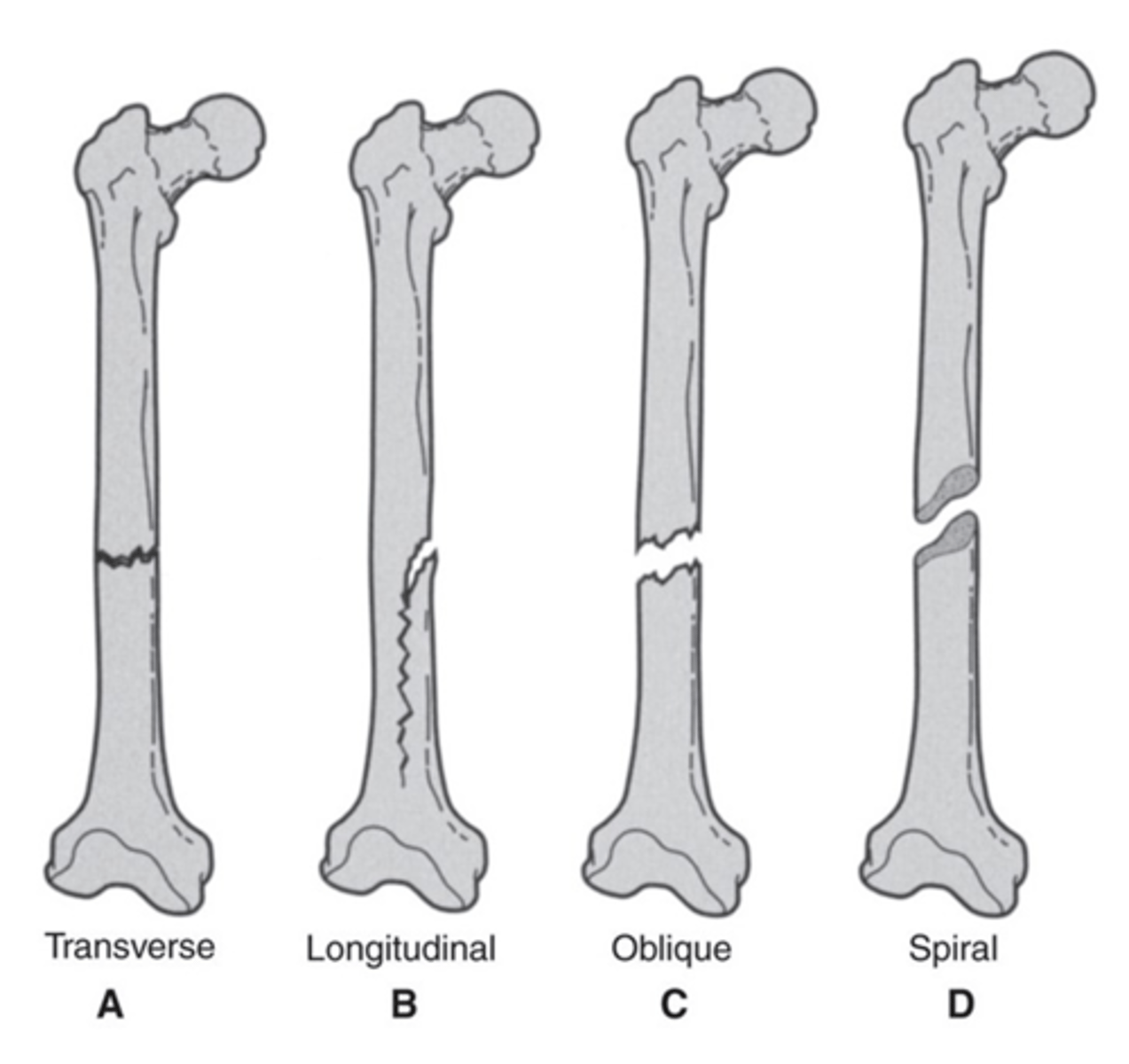
What are the types of fracture line directions?(4.)
- Transverse
- Longitudinal
- Oblique
- Spiral
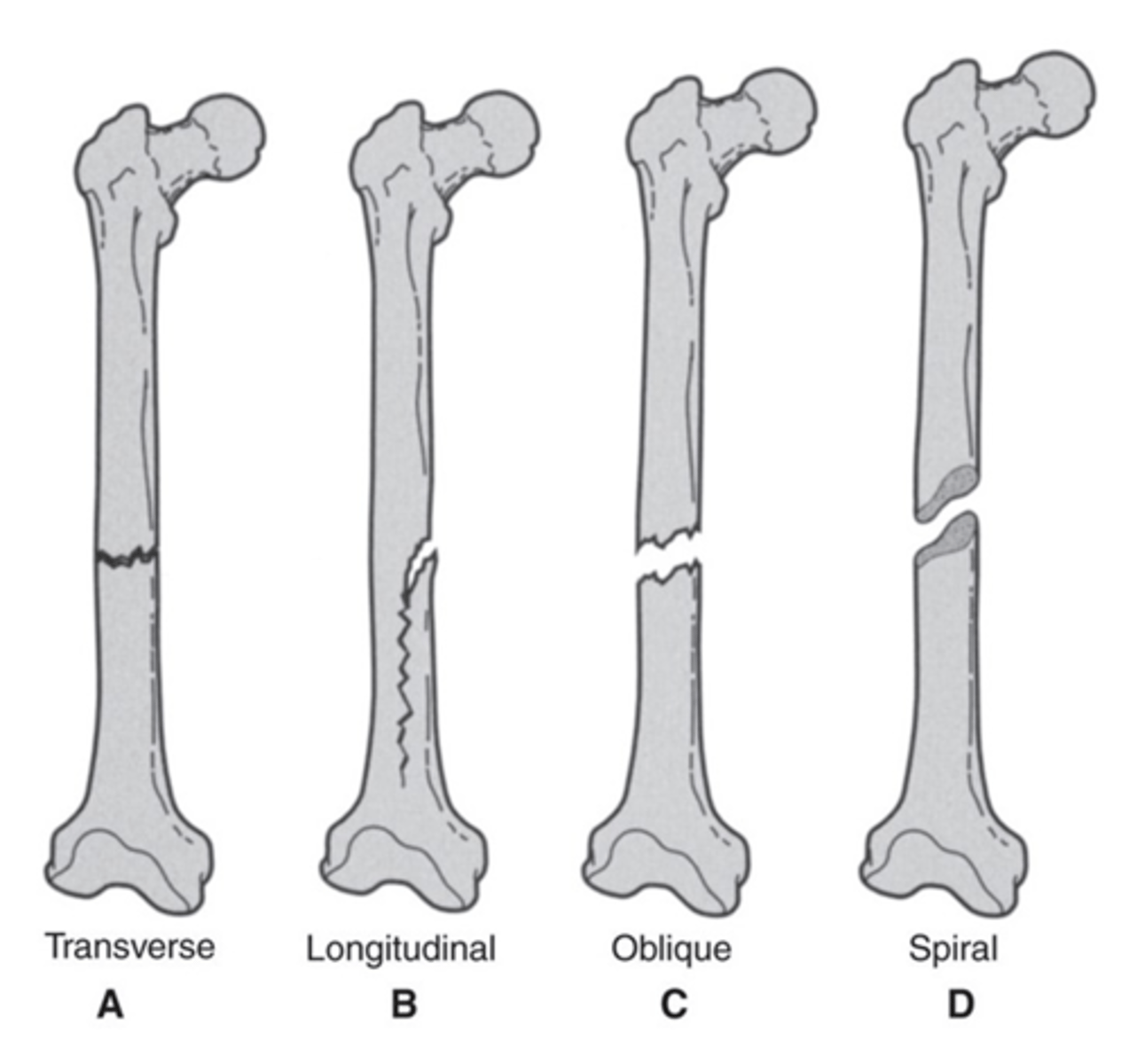
What are the types of comminuted fractures? (4.)
- Wedge
- Segmental
- Multiple fragments
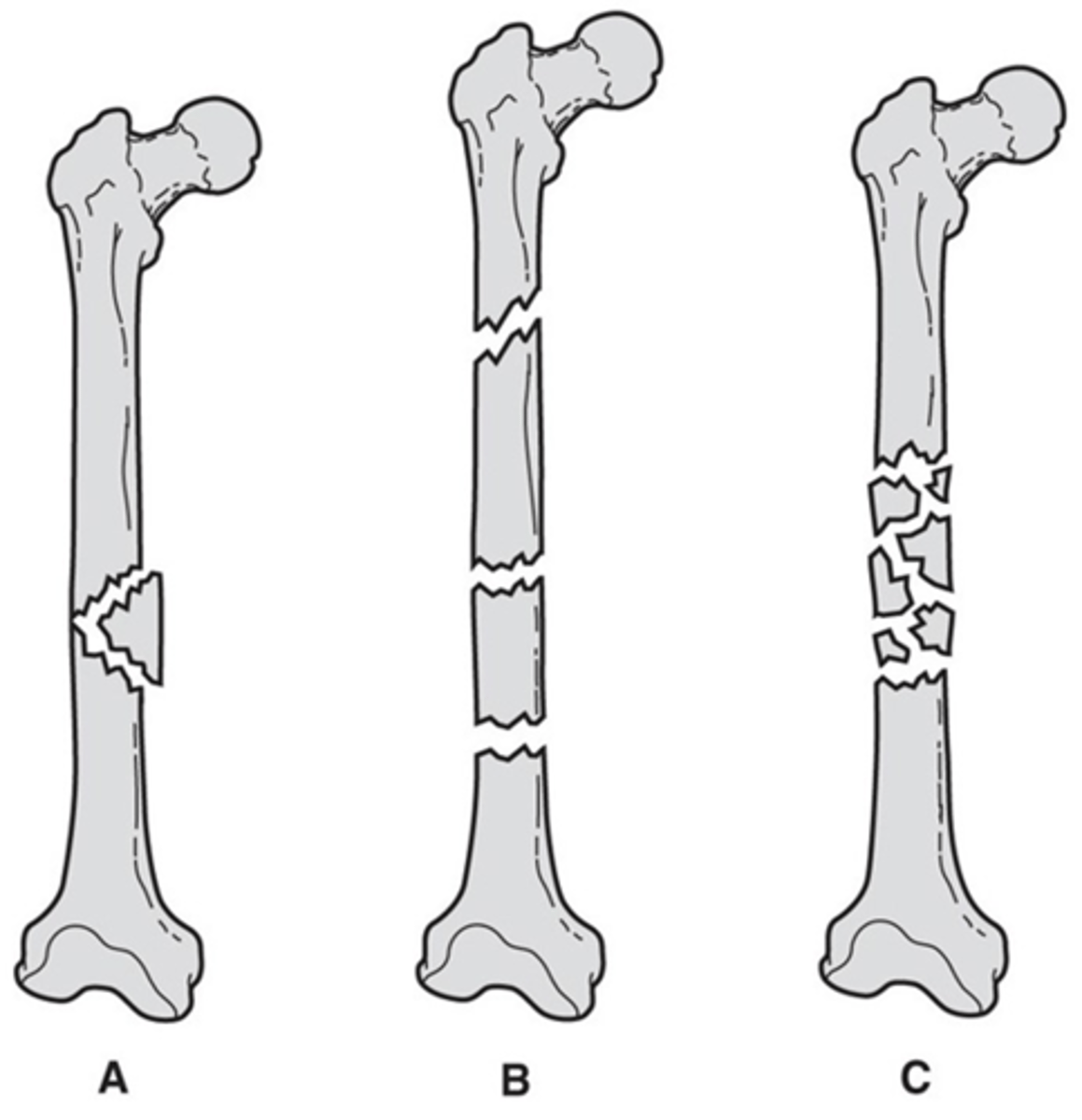
Fracture lines in irregular bones are referenced by the _______ (4.)
Cortices
Fracture lines are evident by radiolucency or radiopaque? (4.)
Radiolucency
*The amount of radiolucency depends on:
- the extent of acute hemorrhage
- Space between fragments
How is impaction of the bone shown on imaging? (5.)
Radiodense
2 types:
- Depression
- Compression
What are depression fractures? (5.)
Surface of one bone is driven into the surface of another bone
What is compression fractures? (5.)
Both surfaces of one bone are forced together
How does avulsion fractures appear on imaging? (5.)
Radiolucent
What is avulsion fracture? (5.)
Tensile loading of the bone from a muscle-tendon (active contraction) or passive resistance of a ligament against a tensile load
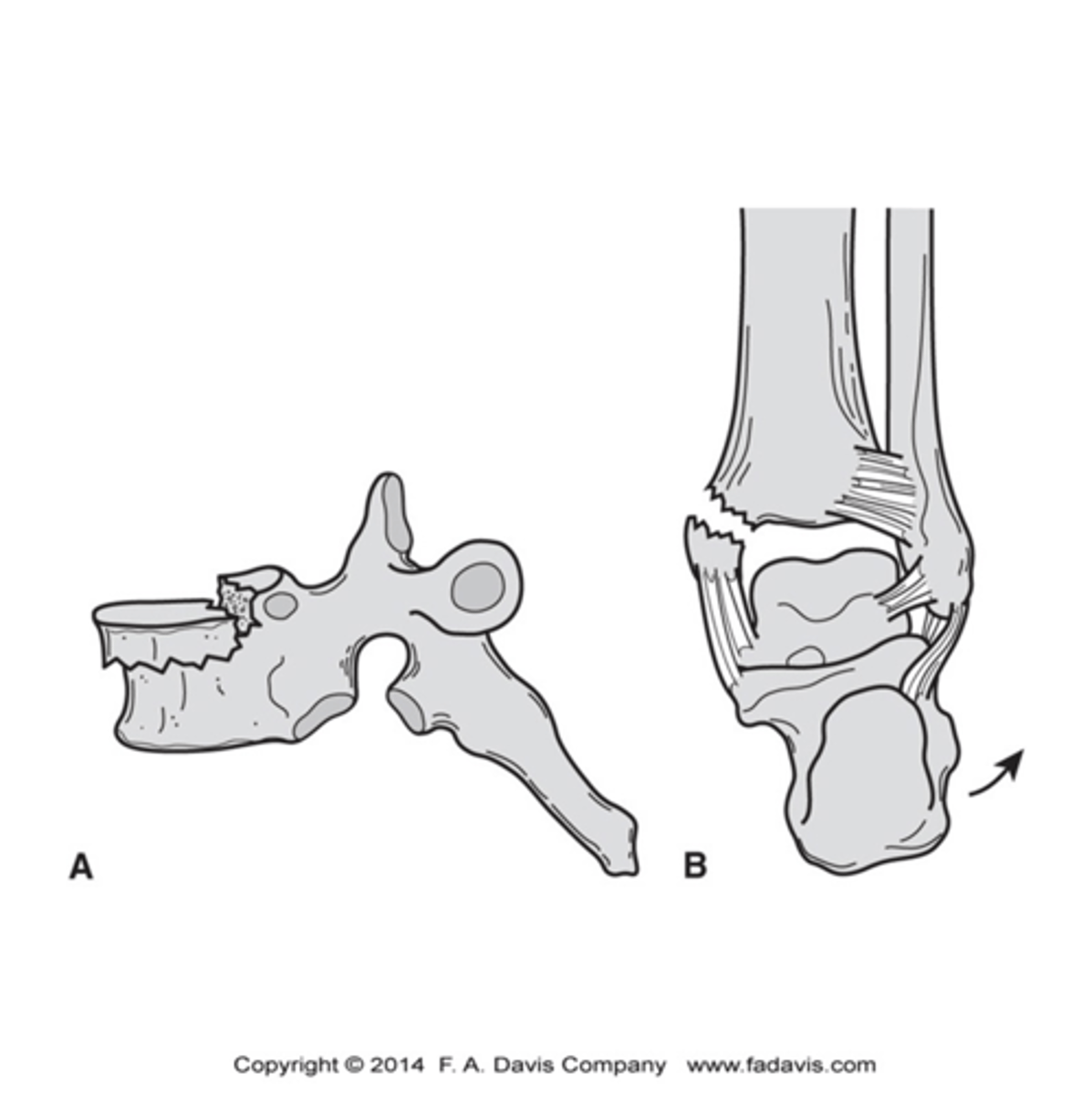
What is a subluxation? (6.)
An incomplete or partial dislocation of a joint
What is a dislocation? (6.)
A separation of two bones where they meet at a joint
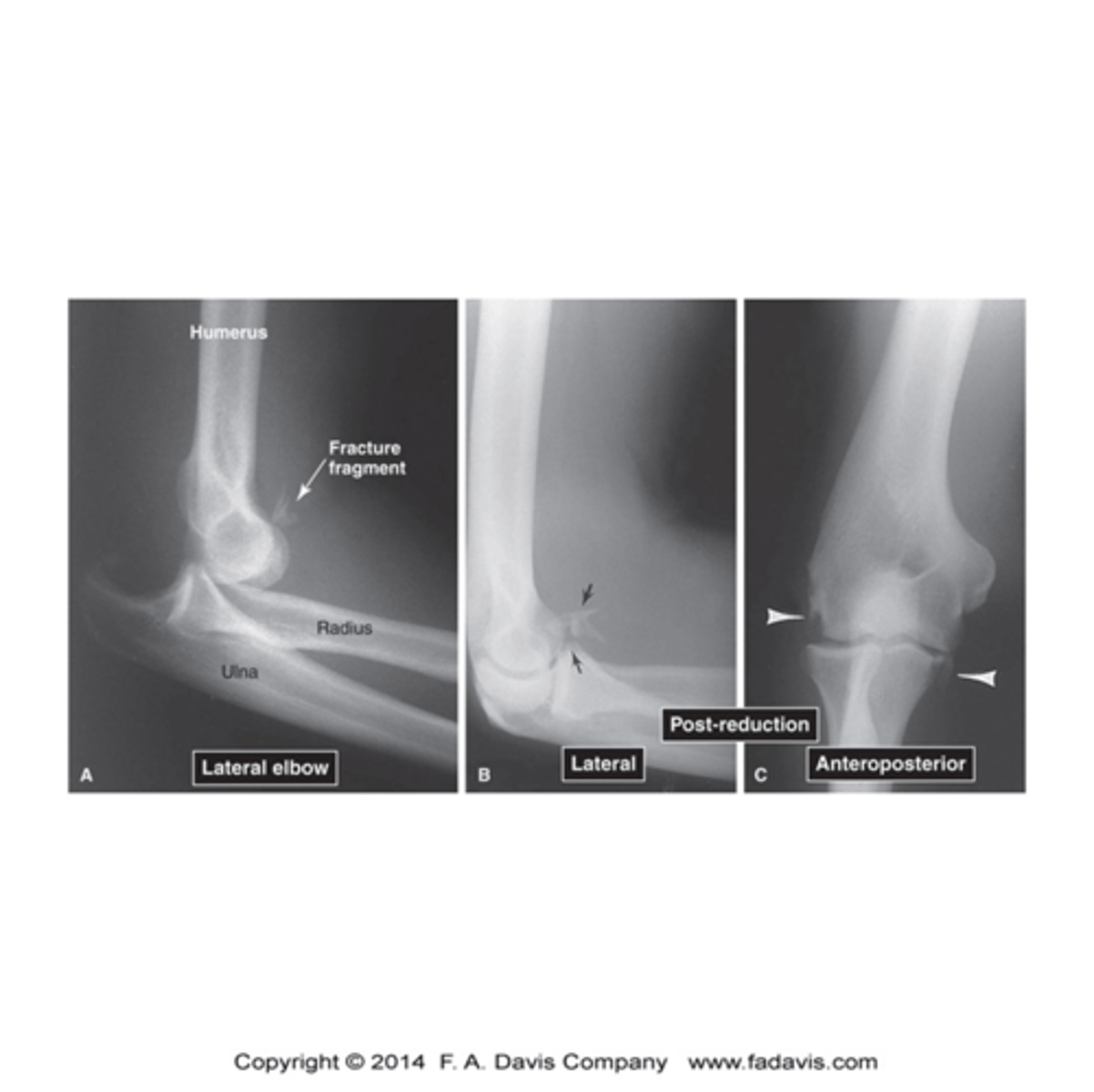
What is a stress fracture? (7.)
- Microfractures, fatigue fractures, insufficiency fractures
- Chronic high-frequency, low load
- Normal loading on abnormal bone
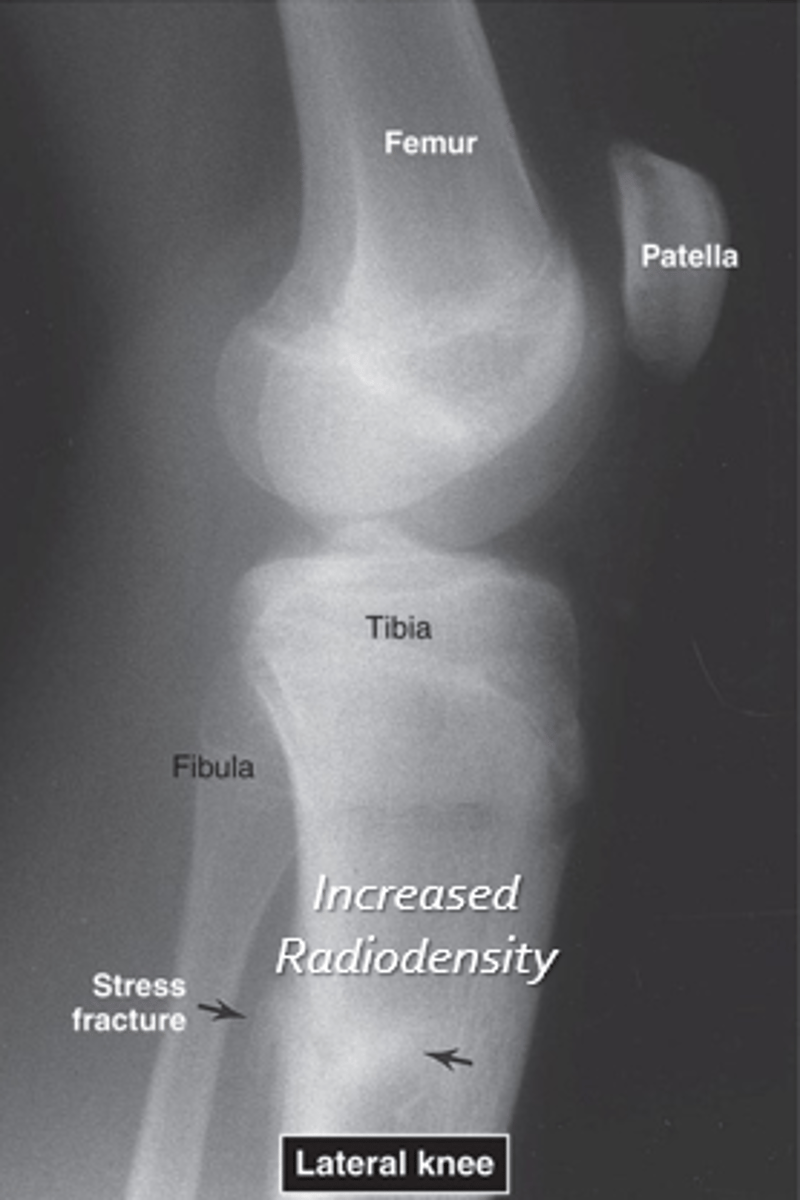
What is a pathological fracture? (7.)
- Bones structurally weakened by pathological process
- Osteogenesis imperfecta: a disease characterized by abnormal maturation of collagen, affecting both intramembranous and endochondral bone formation. (Congenital)
- Osteoporosis: a disease characterized by low bone mass and structural deterioration of bone tissue, leading to bone fragility and an increased risk of fractures of the hip, spine, and wrist. (Acquired)
- Other reasons: Tumors, infections, disuse, sequelae of irradiation, prosthetic joint replacements, bone graft fractures.
